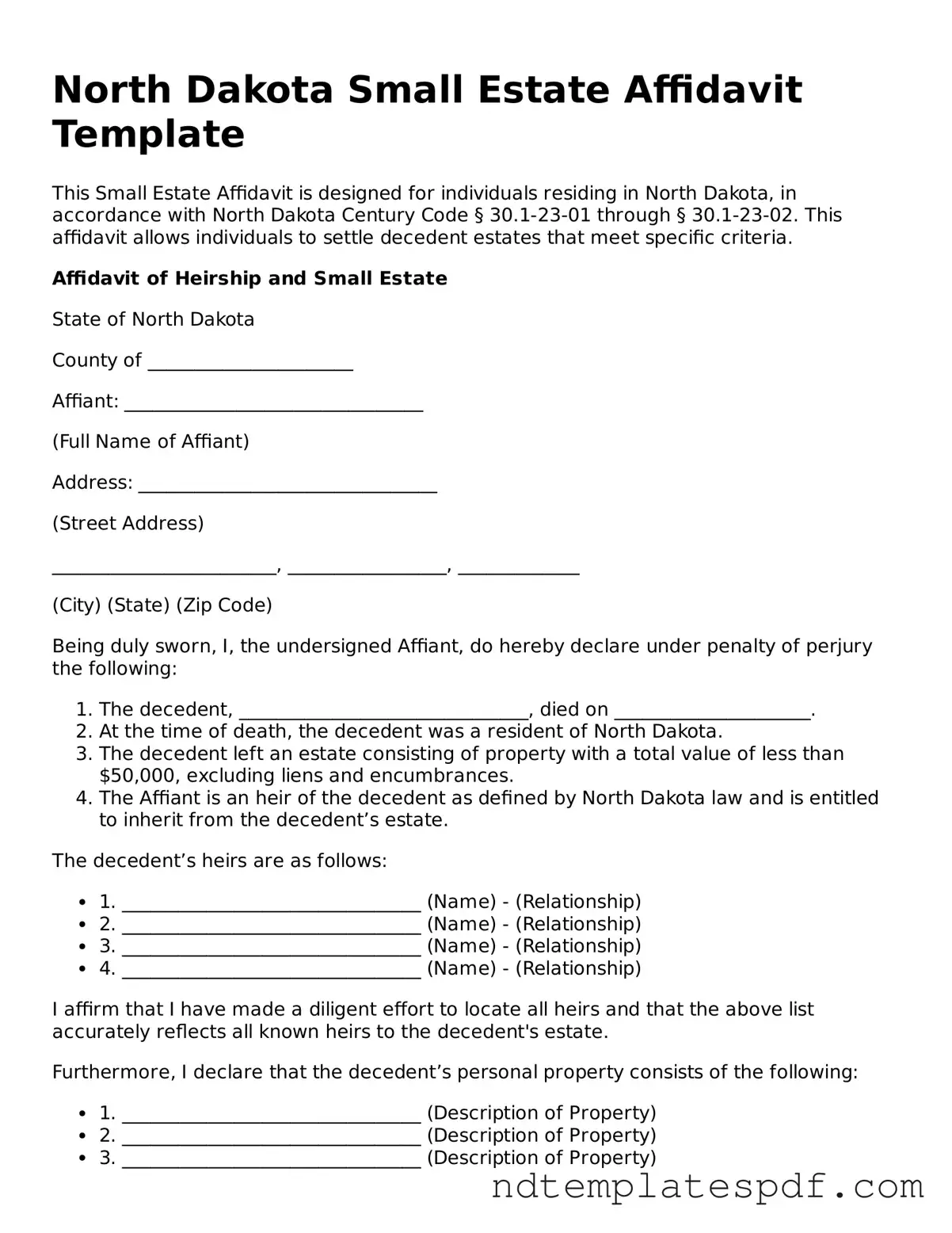Detailed Steps for Using North Dakota Small Estate Affidavit
Once you have gathered the necessary information and documents, you can begin filling out the North Dakota Small Estate Affidavit form. Completing this form accurately is essential to ensure that the estate can be settled efficiently. Below are the steps to guide you through the process.
- Obtain the North Dakota Small Estate Affidavit form. You can find it on the official state website or at your local courthouse.
- Begin with the top section of the form. Fill in the decedent's name, date of death, and last known address. Ensure that all details are accurate.
- Next, provide your name and address as the affiant. This section identifies you as the person making the affidavit.
- List the names and addresses of all heirs of the decedent. Include all individuals who are entitled to inherit under North Dakota law.
- Indicate whether the total value of the estate is less than $50,000, excluding certain types of property, such as real estate. This is a critical requirement for using the Small Estate Affidavit.
- Detail the assets of the estate. Include bank accounts, personal property, and any other relevant assets. Be specific about each item and its value.
- Sign the affidavit in front of a notary public. Your signature must be witnessed and notarized to validate the document.
- Make copies of the completed affidavit and any supporting documents for your records. You may need these copies for future reference or to provide to financial institutions.
- File the original affidavit with the appropriate court in the county where the decedent lived at the time of death. Check if there are any filing fees associated with this process.
After completing and filing the form, you may need to follow up with the court or any financial institutions involved to ensure that the estate is settled according to the terms outlined in the affidavit. This can include transferring assets to the heirs or settling any outstanding debts of the estate.
